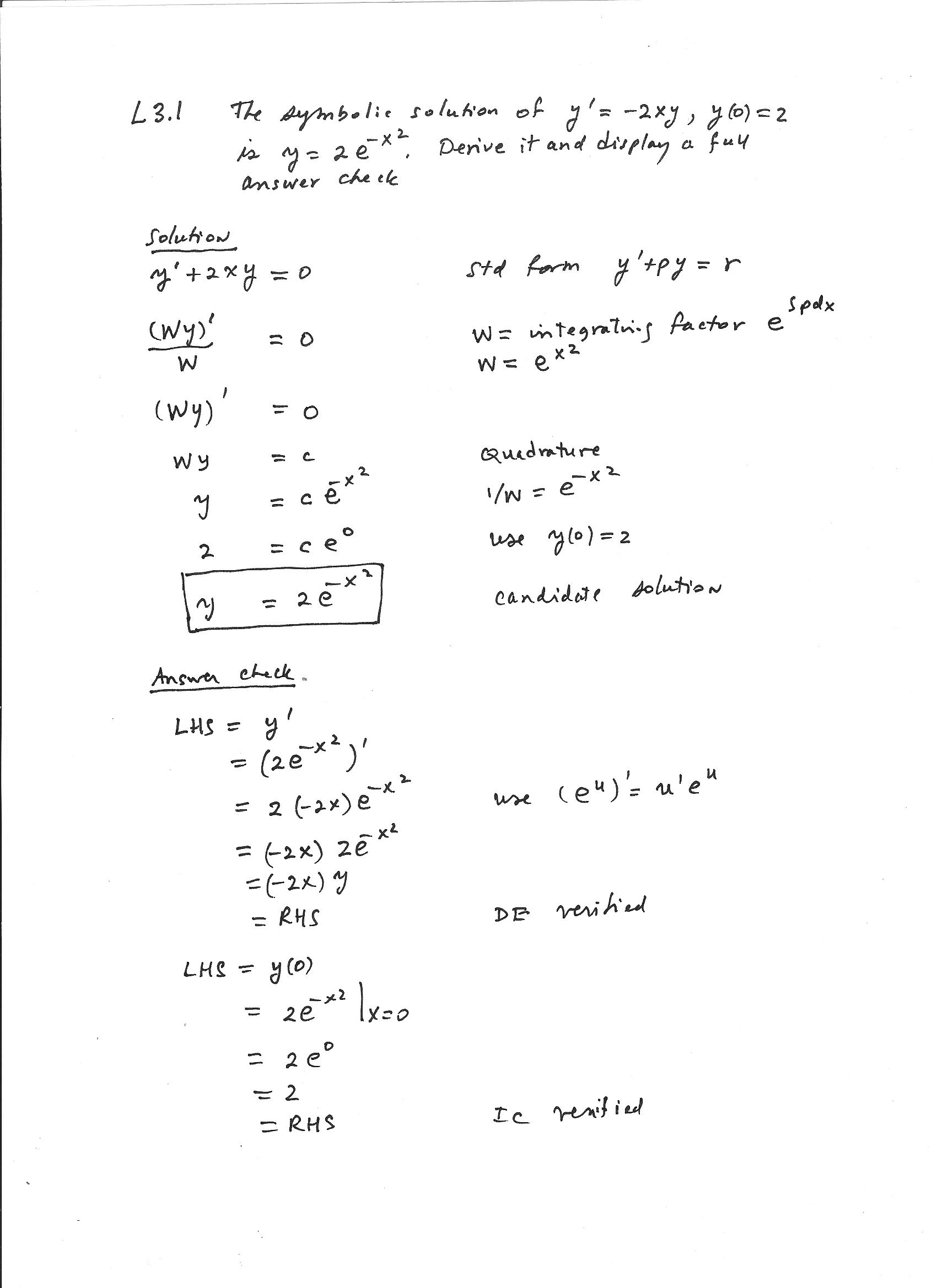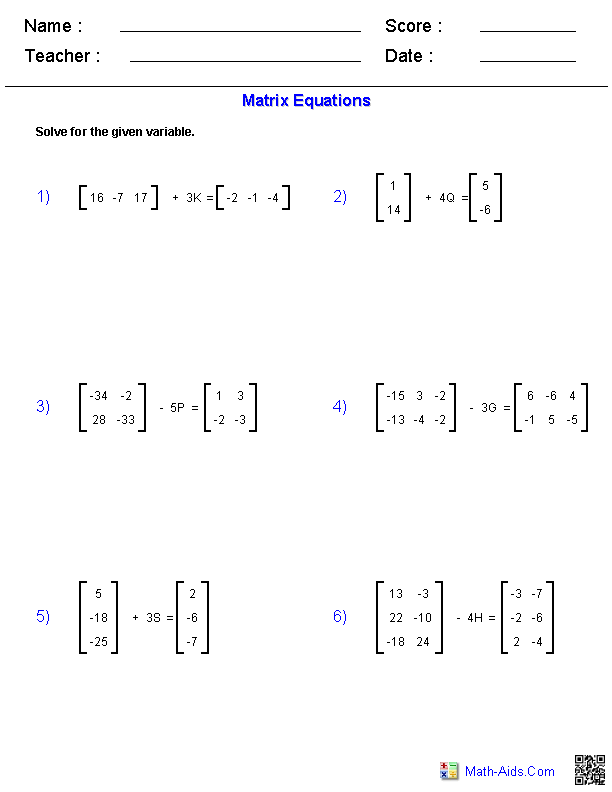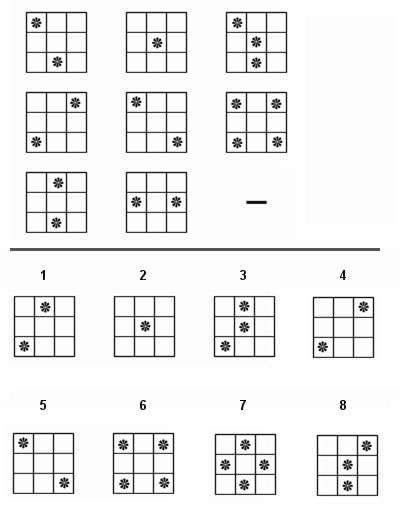Matrix Worksheets with Answers
Are you a high school or college student searching for comprehensive matrix worksheets with detailed answers? Look no further! This blog post is designed to provide you with all the resources you need to master matrix operations and concepts. Whether you are studying linear algebra, computer science, or engineering, these worksheets will help you solidify your understanding of matrices and their applications.
Table of Images 👆
More Other Worksheets
Kindergarten Worksheet My RoomSpanish Verb Worksheets
Cooking Vocabulary Worksheet
DNA Code Worksheet
Meiosis Worksheet Answer Key
Art Handouts and Worksheets
7 Elements of Art Worksheets
All Amendment Worksheet
Symmetry Art Worksheets
Daily Meal Planning Worksheet
What is a matrix?
A matrix is a mathematical concept that consists of a set of numbers arranged in rows and columns. Matrices are used in various fields such as mathematics, physics, computer science, and engineering to represent and manipulate data, equations, and transformations. They are essential tools for solving systems of linear equations, performing operations in linear algebra, and analyzing geometric transformations.
How do you represent a matrix algebraically?
A matrix can be represented algebraically using brackets to enclose its elements in rows and columns. For example, a general matrix A with dimensions m x n would be represented as \[A = \begin{bmatrix} a_{11} & a_{12} & \ldots & a_{1n} \\ a_{21} & a_{22} & \ldots & a_{2n} \\ \vdots & \vdots & \ddots & \vdots \\ a_{m1} & a_{m2} & \ldots & a_{mn} \end{bmatrix}\], where a_{ij} represents the element in the ith row and jth column of the matrix.
What is the difference between a row matrix and a column matrix?
A row matrix is a matrix with only one row and multiple columns, while a column matrix is a matrix with only one column and multiple rows. The key distinction is in the arrangement of the elements, with a row matrix being wider than it is tall, and a column matrix being taller than it is wide.
How do you add two matrices together?
To add two matrices together, you simply add the corresponding elements of each matrix. This means adding the elements in the same position in each matrix to get the corresponding element in the resulting matrix. The two matrices being added must have the same dimensions, meaning they must have the same number of rows and columns.
How do you subtract two matrices?
To subtract two matrices, you simply subtract the corresponding elements of the matrices. This means that each element in the result matrix will be the result of subtracting the corresponding elements of the original matrices. Make sure that the matrices you are subtracting have the same dimensions, otherwise, subtraction is not defined.
How do you multiply a matrix by a scalar?
To multiply a matrix by a scalar, you simply multiply each element in the matrix by the scalar value. This means multiplying each entry in the matrix by the same scalar value, resulting in a new matrix where each element is the product of the original element and the scalar.
What is the determinant of a matrix?
The determinant of a matrix is a scalar value that is calculated from the elements of the matrix using a specific formula. It helps determine if the matrix is invertible and is essential for solving systems of linear equations, calculating the area of parallelograms/volume of parallelepipeds, and more mathematical operations.
How do you find the inverse of a matrix?
To find the inverse of a matrix, you can use the formula A^(-1) = (1/det(A)) * adj(A), where A is the matrix you want to invert, det(A) is the determinant of A, and adj(A) is the adjugate of A. First, calculate the determinant of A, then find the adjugate by transposing the matrix of cofactors. After that, multiply the adjugate by the reciprocal of the determinant to get the inverse of the matrix.
What is the transpose of a matrix?
The transpose of a matrix is a new matrix formed by turning rows into columns and vice versa. This means that the element in the i-th row and j-th column of the original matrix becomes the element in the j-th row and i-th column of the transposed matrix.
How do you solve a system of linear equations using matrices?
To solve a system of linear equations using matrices, you first write the system in matrix form, with the coefficients of variables in one matrix, the variables matrix, and the constants in another matrix, the constants matrix. Then, you perform elementary row operations on the augmented matrix (combining the variables matrix and the constants matrix) to row-reduce it to reduced row-echelon form. This process helps you solve for the values of the variables in the system, resulting in the solution to the system of linear equations.
Have something to share?
Who is Worksheeto?
At Worksheeto, we are committed to delivering an extensive and varied portfolio of superior quality worksheets, designed to address the educational demands of students, educators, and parents.























Comments